So much drama for such a tranquil place. Past AND present.
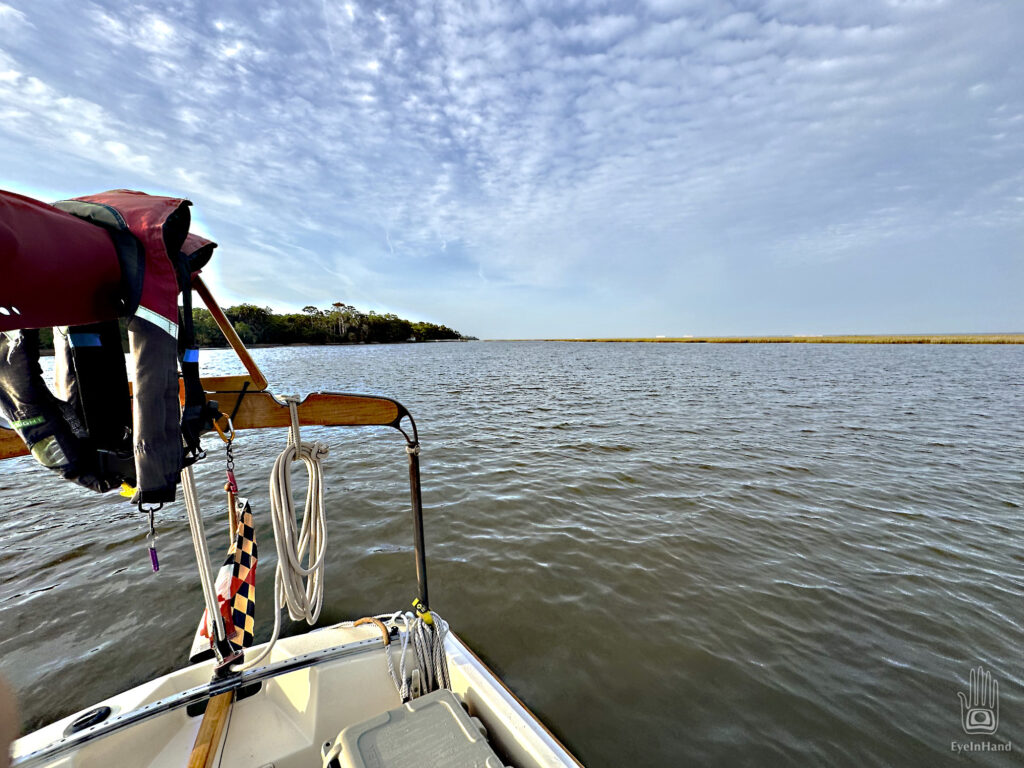
It’s about 4 in the afternoon when we drop anchor in Brickhill River, “river” though not much wider than a creek here. The tide is low and slack, just starting to turn. Toward the west is a broad marsh, so wide and flat we can see the dry-docks of Kings Bay on the horizon to the south. A forested mainland sweeps all the way north in a thin blue line.
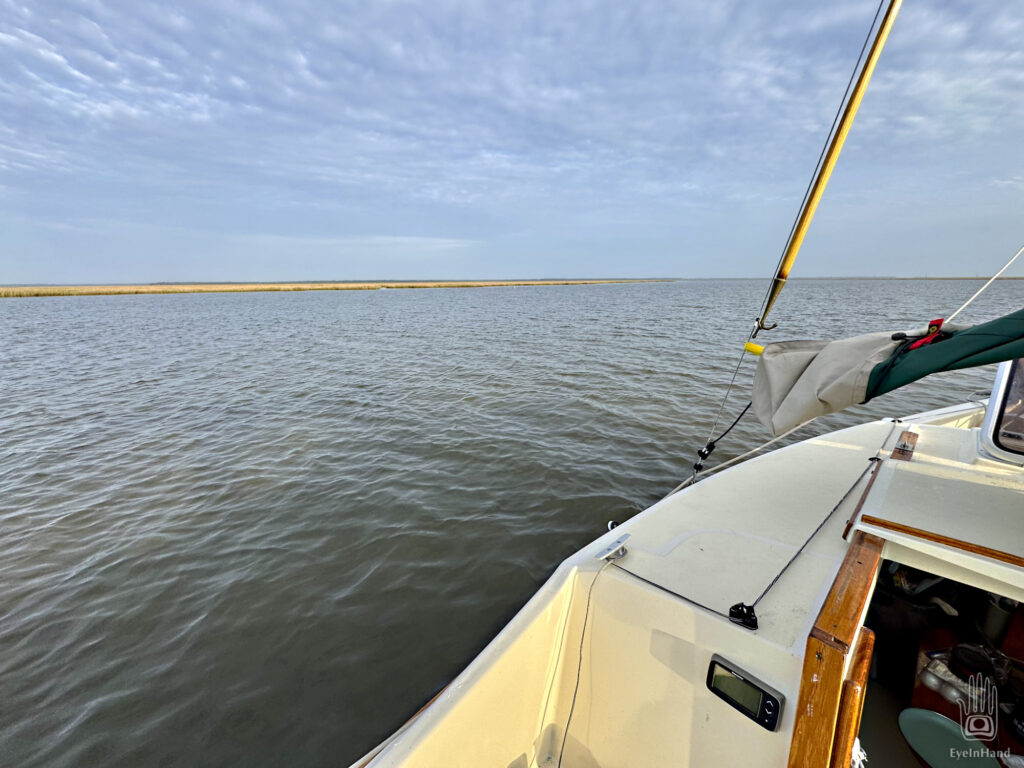
We row ashore and climb the sandy bluff to a sand road. It curls along the bluff under live oaks, circles a grassy lawn big as two football fields. Through the trees are the white columns of the Carnegie mansion known as Plum Orchard. We get views of Tidings as we walk the road. Doug pauses and cocks his head.
“Something doesn’t look right. See how she’s swinging back and forth?”
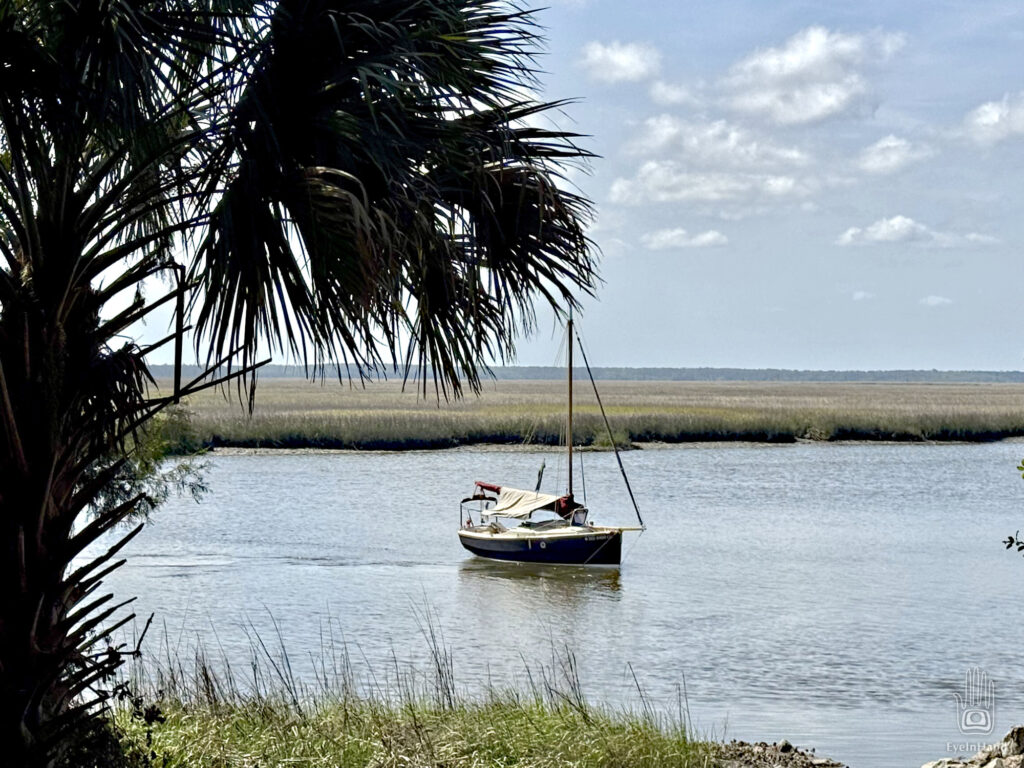
Though the current is still weak, she seems broadside to it, and gently swings to and fro like a pendulum.
“Hmm. Odd. Maybe just the wind. She’s probably fine, right?” I can see Doug pondering while we stroll around to the back of the house.
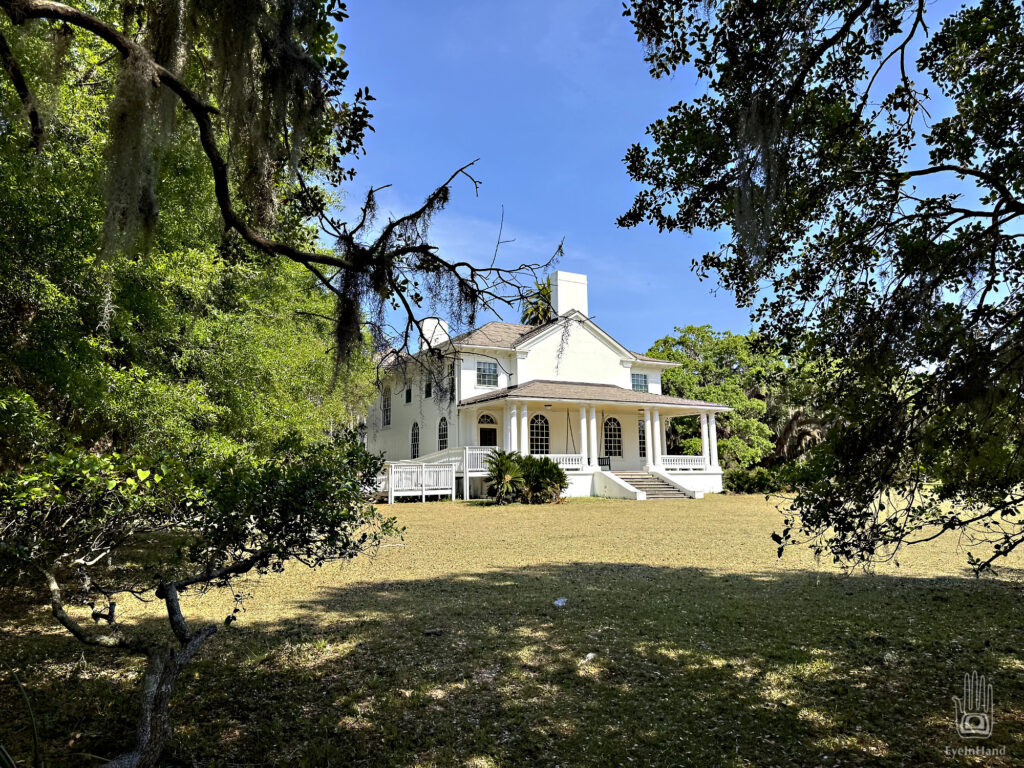
The house is closed up tight, but bathrooms are open through separate doors. A Park Service adaptation to what must have been a pantry or tack room. The low-bid contractor grade stalls look out of place in a room with heart pine floors, 10 foot tall antique glass windows trimmed with hand carved moldings. As before, there’s no one here but us – no other visitors, no park service tour guides. We fill water bottles at an old iron spigot outside and walk on. I make a wide swing around the front for a better view.
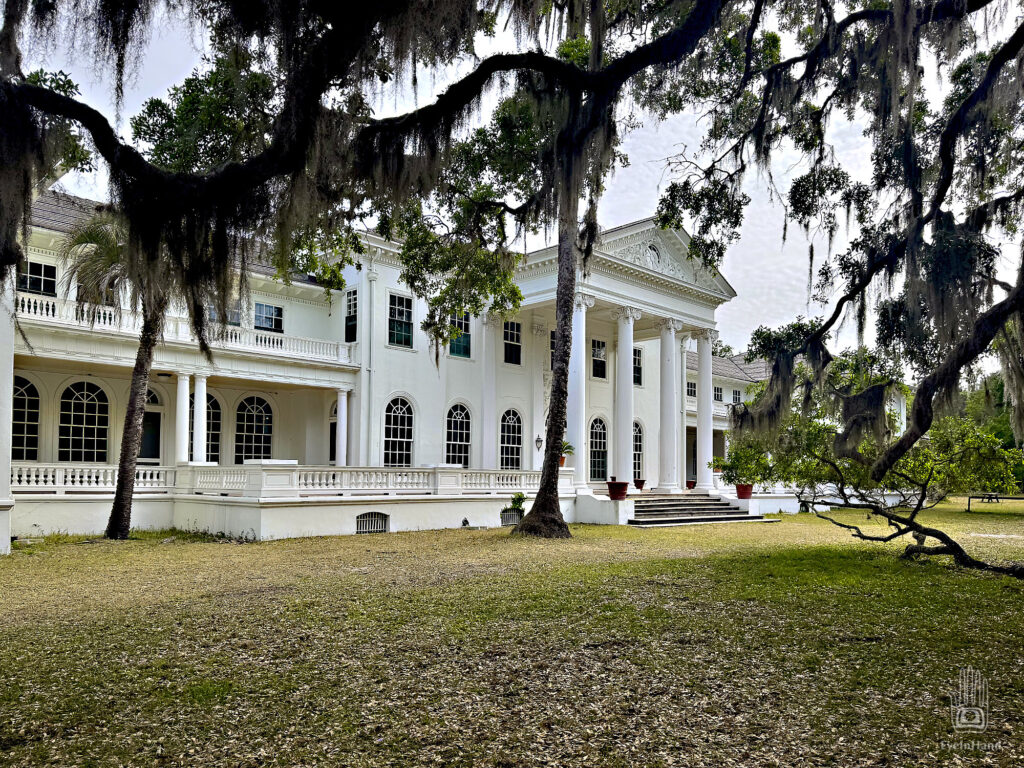
The central part with the columns is the original mansion. It was built in 1898 for one of the Carnegie sons, on a budget of $10,000. Originally referred to as “a simple house,” it was the first of many built for the adult children when Dungeness was complete. George moved into Plum Orchard with his wife Margaret. But Margaret, also from a wealthy family, had higher aspirations. Immediately, she had two more wings added, including a ballroom, more than tripling the size of the house to 22,000 square feet. I still marvel at how you’d build such things on a remote island, far from skilled craftsmen and materials. I guess with enough money you can do anything.
When George died, Margaret remarried and moved to The Plaza Hotel in New York. Apparently still not satisfied, she was sued for having an affair with a married car salesman and moved to Paris – which was surely more to her liking – then finally to a farm in Kenya. Restless folk.
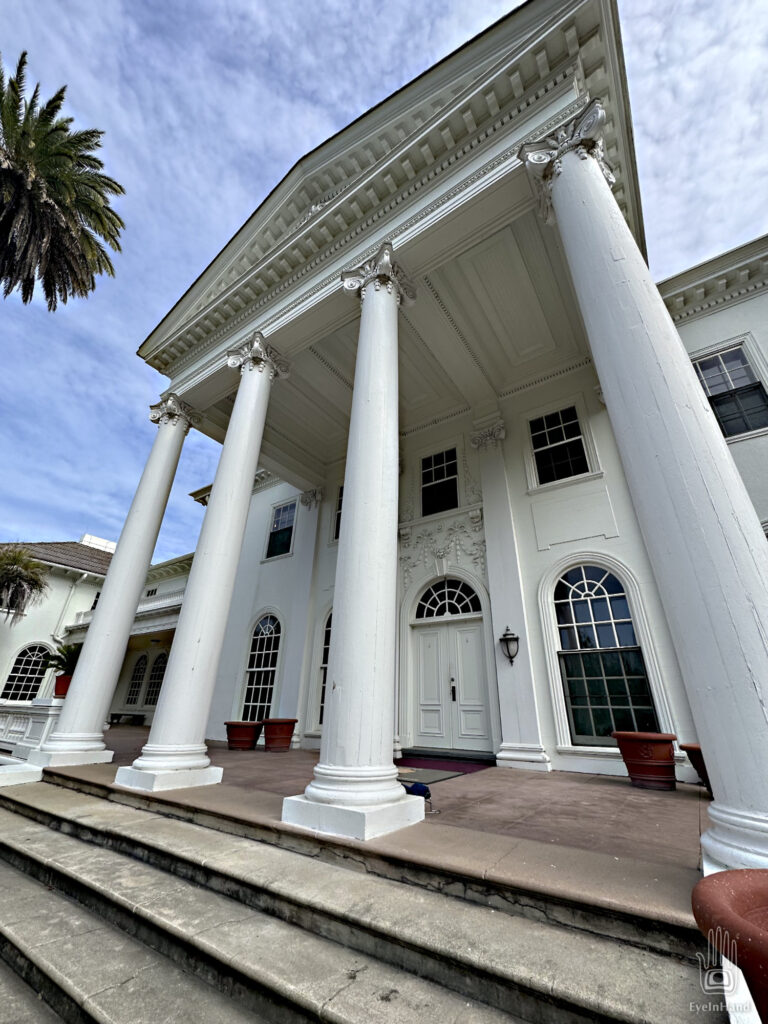
The next generation of residents was even more colorful. Nancy was youngest of the nine Carnegie children. She fell in love with the island’s Irish stableboy, a drunkard, and eloped with him. This caused quite a stir in the Yankee gossip rags up north. Nancy and her tippling beau were shipped off to Europe by rich Uncle Andy to keep them out of society circles, and more headlines.
Hever, the Irish husband, was abusive. Nancy frequently escaped to Cumberland to get away from him. Whereupon she fell in love this time with the island’s doctor, though still married to the stableboy. This would not do, you might imagine. Mother Carnegie promptly sent the good doctor away to work in Africa to avoid another splash of scandals. When the Irish husband died suddenly, the doctor (from “a good Kentucky horse family”) was allowed to return.
He was booked to come back on the maiden voyage of the Titanic (yes, THAT Titanic) with a bunch of other wealthy captains of industry. The lucky doctor, however, his fortunes so hopelessly tangled in the swirling volatile maelstrom of high society, fell ill on the way to England and missed his ship. When he finally arrived at Cumberland again, he and Nancy were married. Nancy, the doctor, and their heirs lived here in this house until it was transferred to the National Park Service.
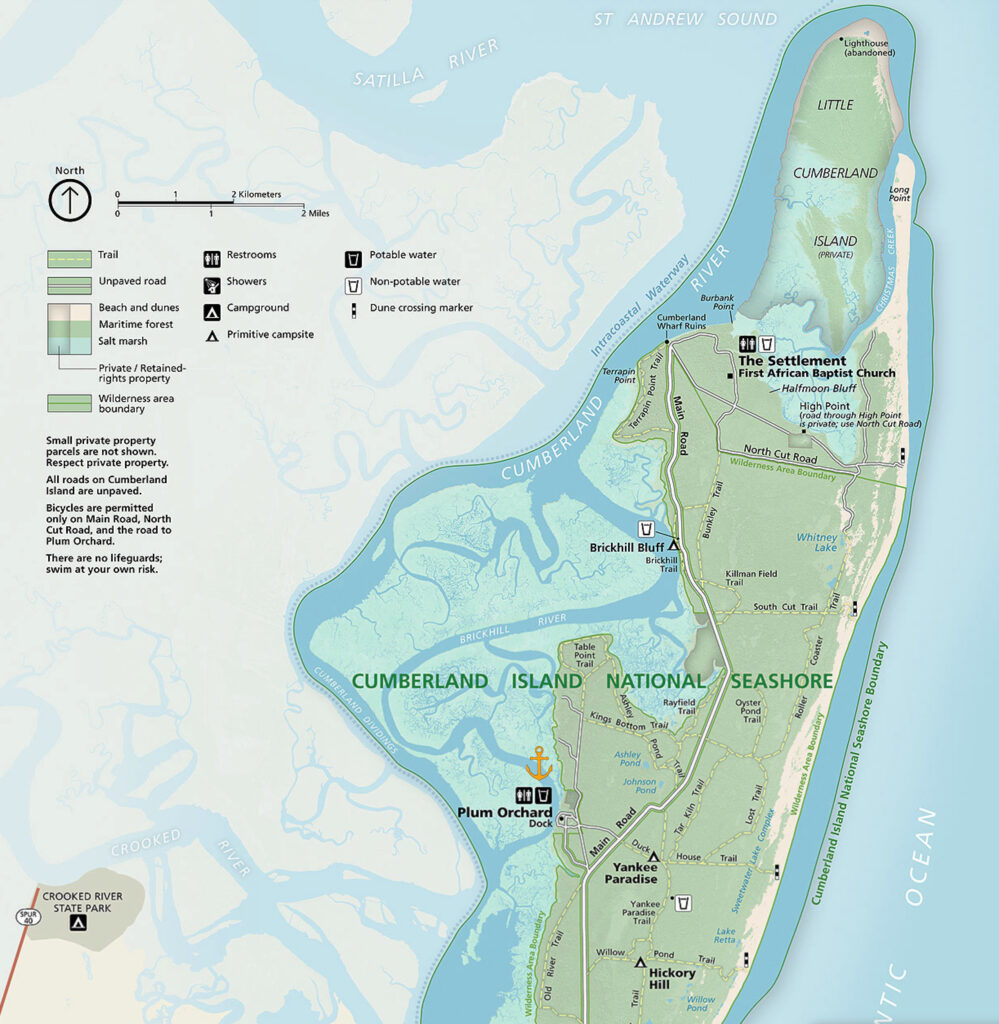
Without need for a destination, we wander for miles on the sand roads through the forests. Don’t even bother with maps, just take a turn and follow whatever looks interesting. We cross bridges over swamps where rice was grown, through forests that were once fields of sea island cotton.
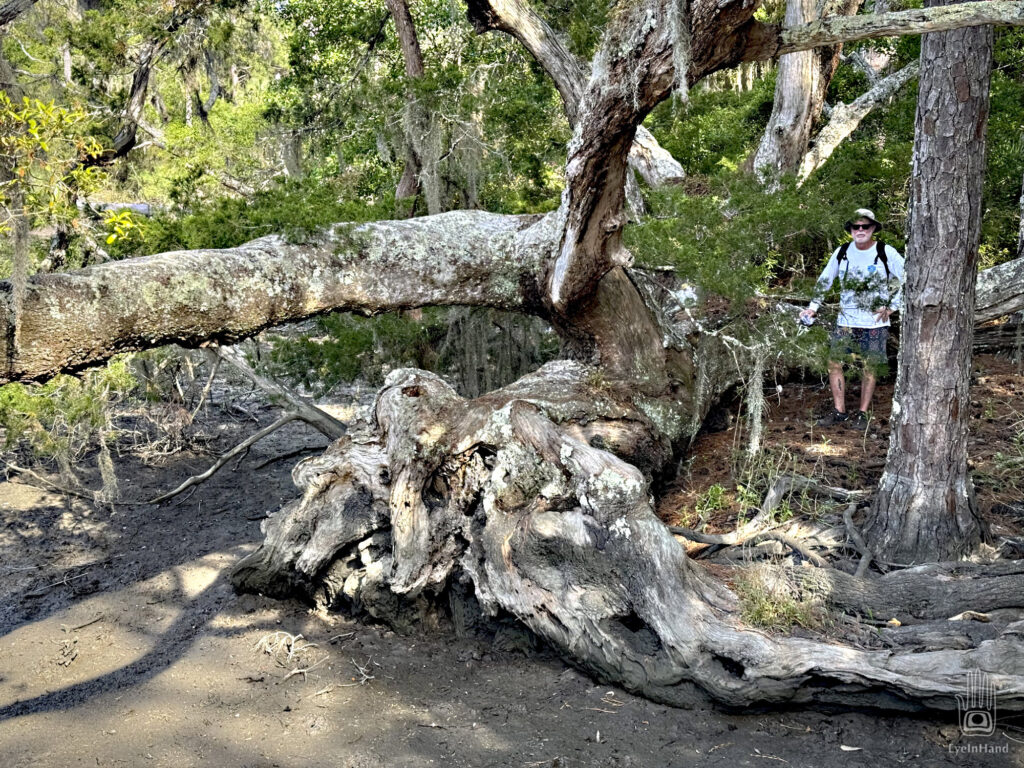
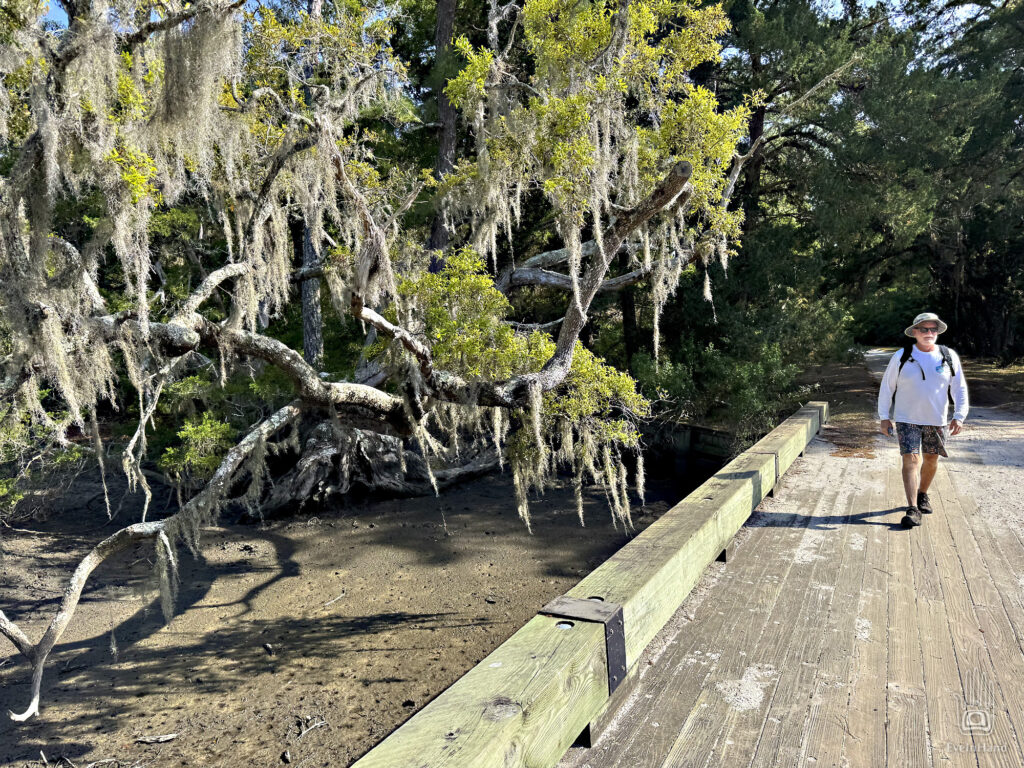
Wild animals here are so used to seclusion they don’t even notice us. A raccoon busy foraging in leaves doesn’t see us until we’re almost on top of him, and he looks at us confused, like he’s not sure what we are. A family of wild horses ambles down the road directly toward us, paying us no mind. They have somewhere to go and we’re just part of the scenery. We step off the road to let them pass – no need to provoke a kick or bite. The skittish colt does the same, trotting through the bushes on the other side until they’ve passed.
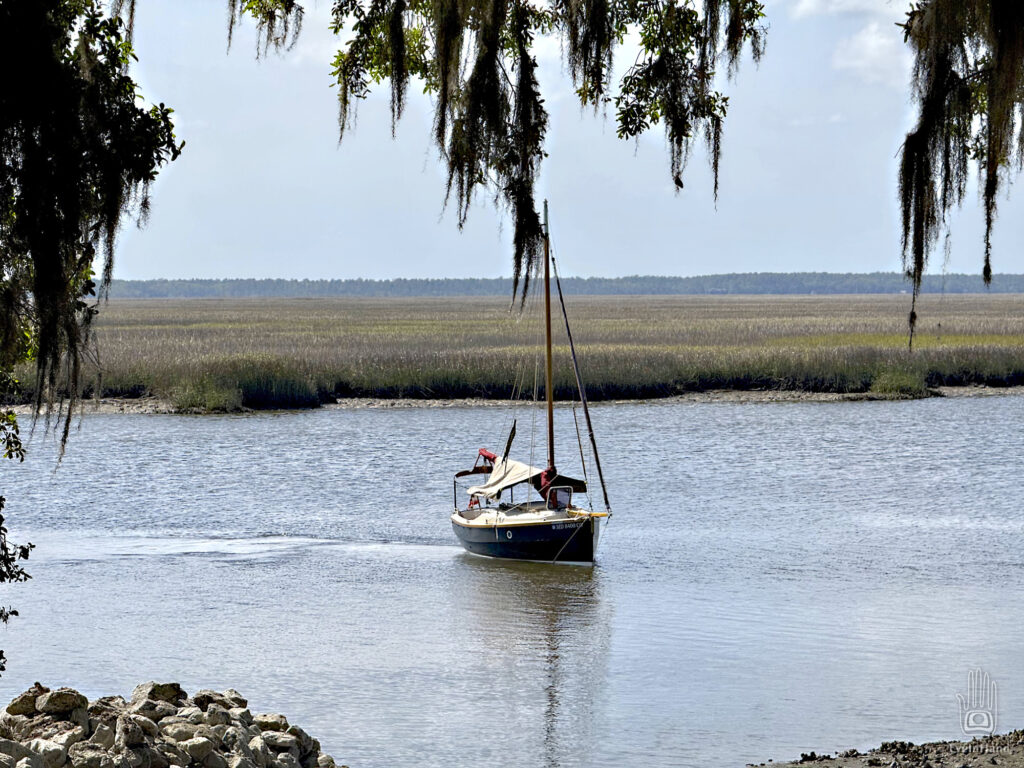
Back at the river, we are alarmed to find Tidings is not where we left her. The current is now running strong, and she’s bucking in it, weaving back and forth toward a rock revetment and the dock, which is now acting like a strainer for anything floating into it. We row hard against the current to reach the boat, but have to stand off and try to hold our position. Tidings is charging back and forth with such force that she could capsize the dinghy and drive us under.
Doug tries to position us where the swings of the pendulum crest, and I try to grab hold and swing up. Twice this fails, and Doug is getting tired. On the third try I manage to hang on and climb aboard without tipping the dinghy over. On the next swing back, I reach down and grab the gunnel so Doug can get in.
Things are moving fast. With each swing, Tidings glides closer to the rocks, close enough I can shove them with the boat hook. Doug warns me off trying that, as there’s too much power in the swinging boat and I could get hurt. He starts the motor to get us away, but the rudder is not turning the boat toward the current.
I go forward and haul on the anchor line to try to pull us off, or at least point us in the right direction. But the line is stuck under the boat on the wrong side. That’s when I realize what’s wrong. Tidings drifted down onto her anchor line and it’s wrapped around the centerboard. That’s why she is riding sideways – she’s broadside to the full force of the current instead nose into it. There’s so much pressure I can’t pull the anchor line free. I ask him to raise the centerboard, but it, too, is stuck, with the line wrapped around it.
Doug waits for the next swing, hauls on the centerboard and guns the engine. This is just enough that I can pull in some line. The more I pull, the more he can raise the centerboard. And suddenly we’re free, just a few feet from the rocks.
He motors us against the current to a wide place with mud banks and marsh on both sides. Here, if we lose our footing we’ll at least have a soft landing.
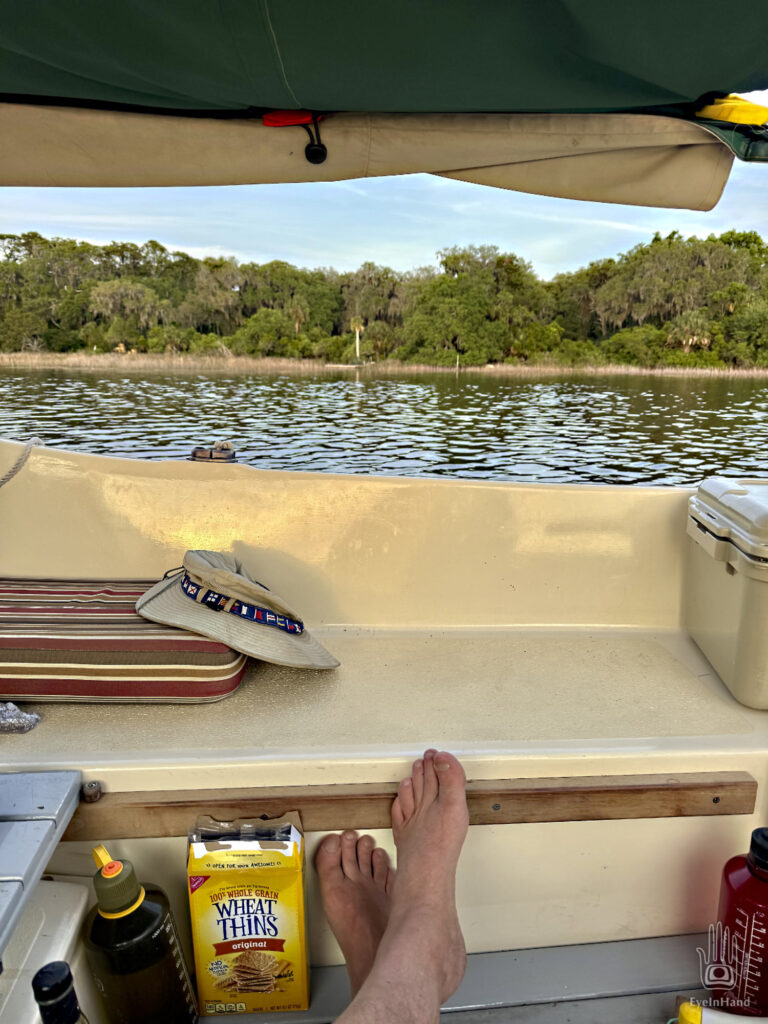
Over dinner and a welcome whisky, we work through what just happened. It’s the same thing as that night at Marineland. When the tide turns, a boat will slowly swing around 180 degrees on her anchor. That’s expected. But in these narrow and shallow anchorages, Tidings can drift down onto her own anchor line. With the centerboard full down in shallow water, it hooks the line and gets tangled. In small boats, it’s common to lower the centerboard at anchor. It stabilizes the boat, so it holds steady when walking on deck and doesn’t rock as fiercely with passing powerboat wakes. But we decide the extra stability is not worth the risk. For the rest of the trip, we only lower the centerboard part way when at anchor.
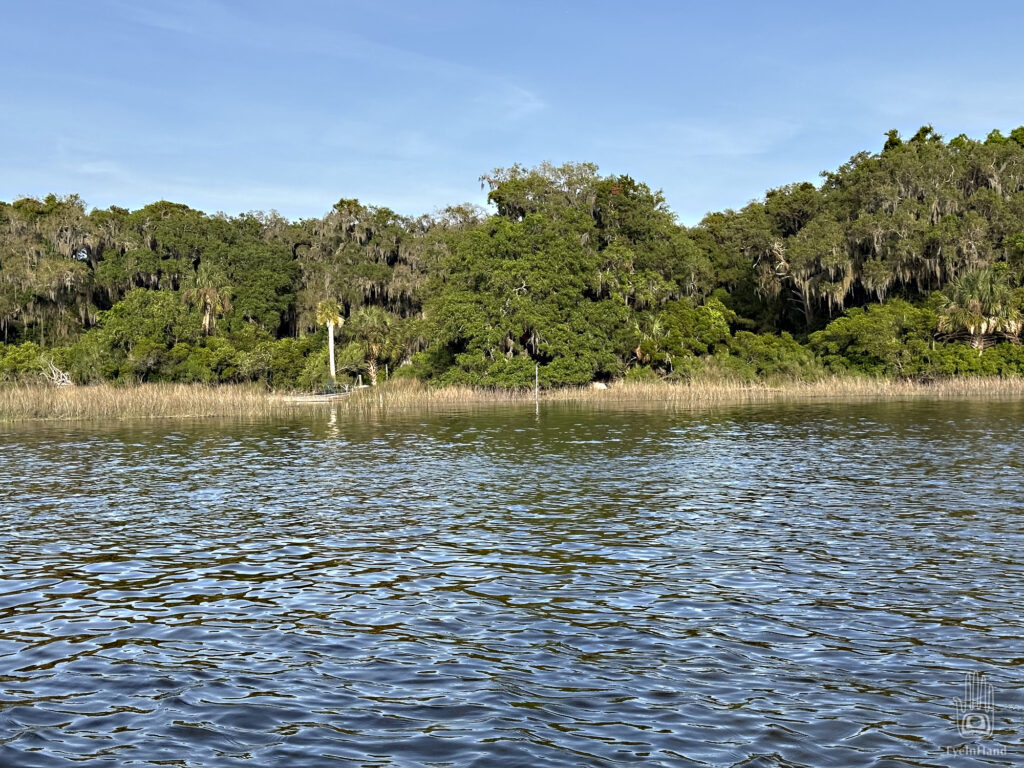
In the morning, we go ashore one last time before heading off. When I come around the house to refill water jugs, I’m surprised to find someone sitting on the veranda – a charming silver-haired lady in her camp chair, reading a book. She explains she’s the volunteer tour guide, brought over that morning on a skiff. She offers to give me a tour. I can tell she is hopeful I’ll say yes, and wants some company. I apologize, that we are making ready to leave. “Bring your captain, I’ll give you both the full tour, or a short one if that’s all you can manage.”
I wish we had taken her up on it. Interior shots of the house look amazing. And I’m sure, given the circumstances, I am the only person she will see all day.
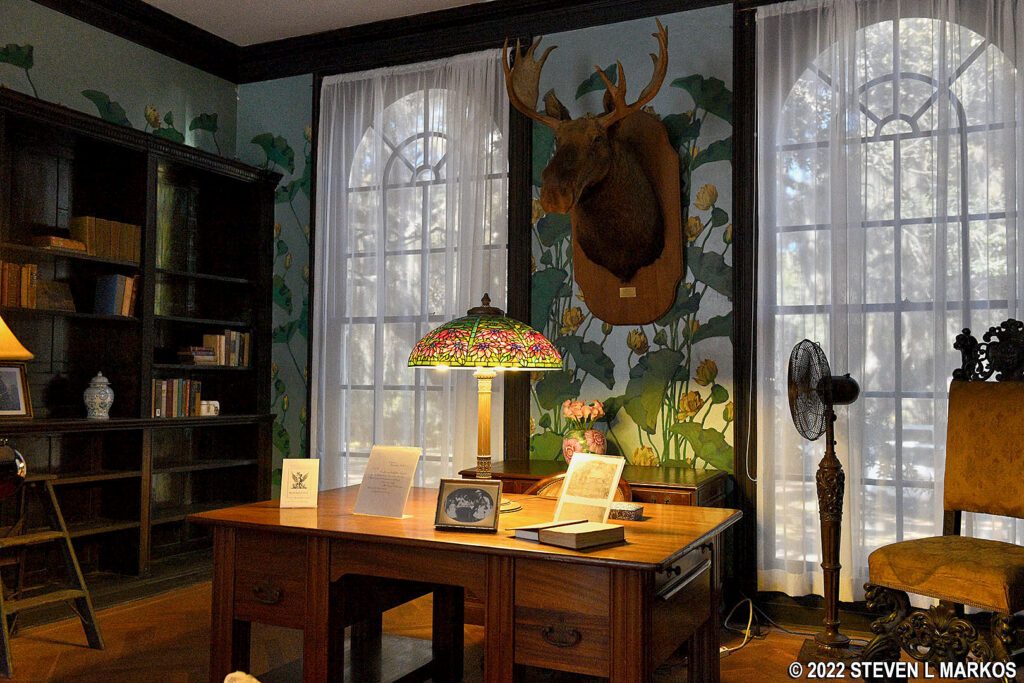
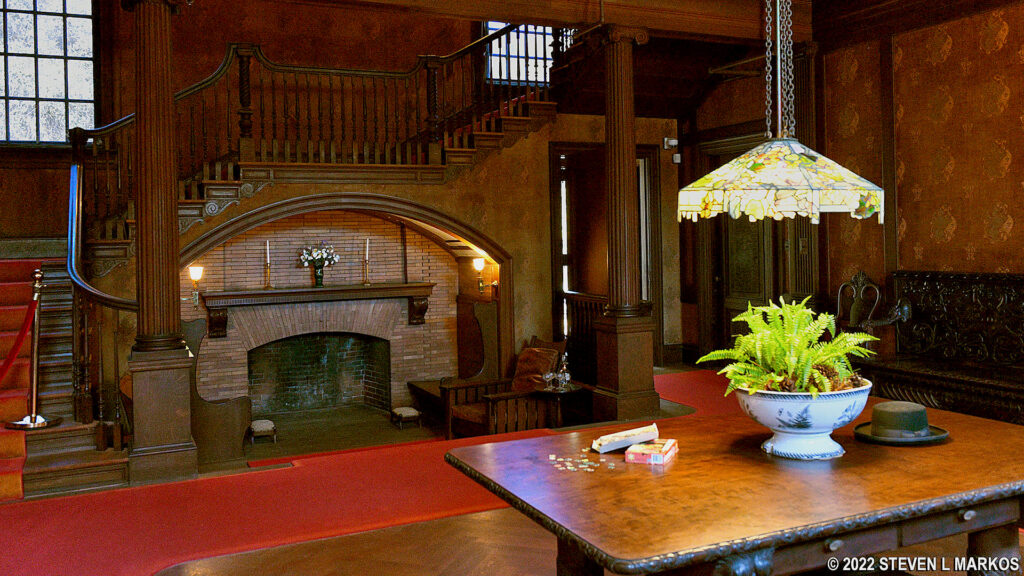
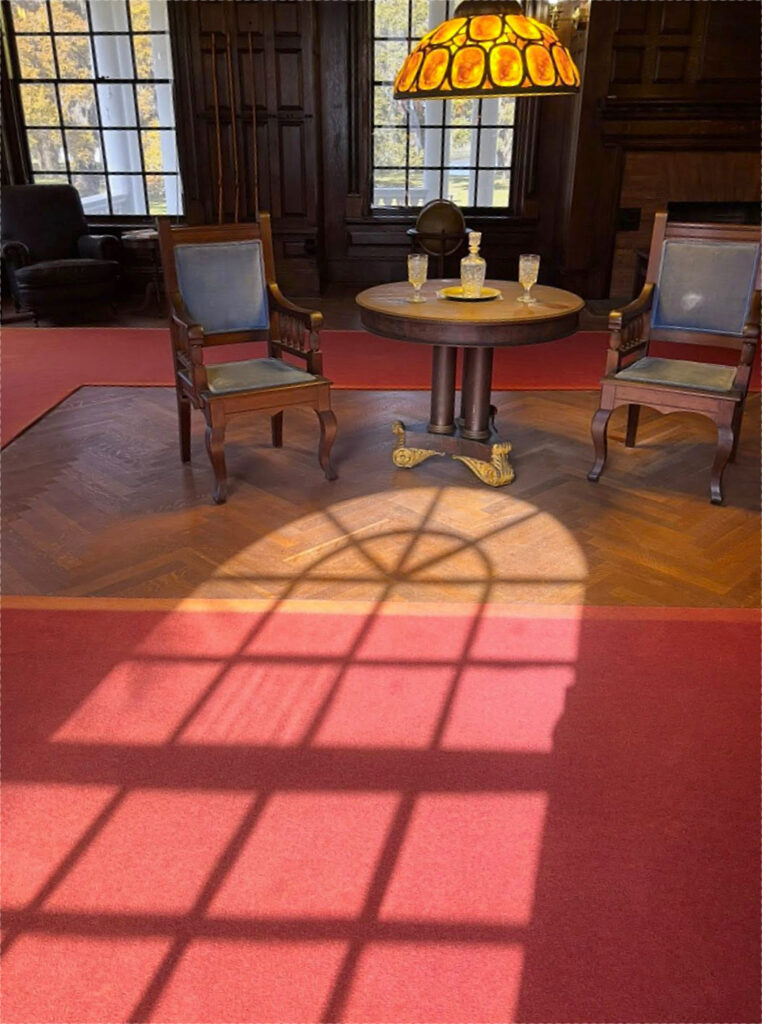
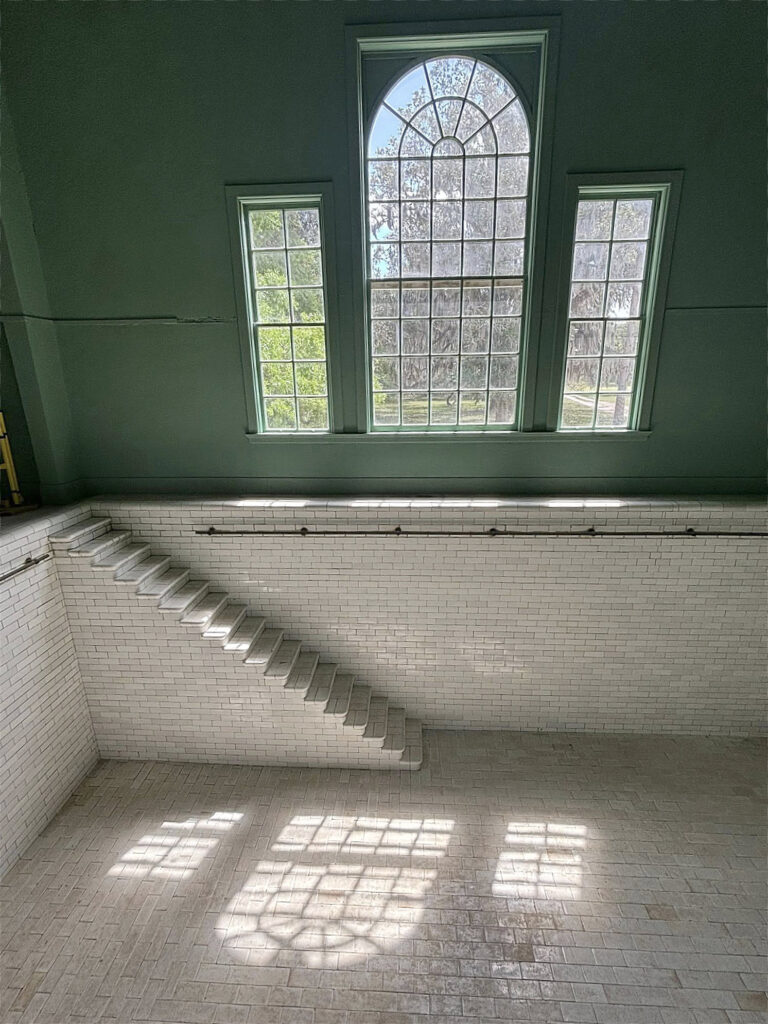
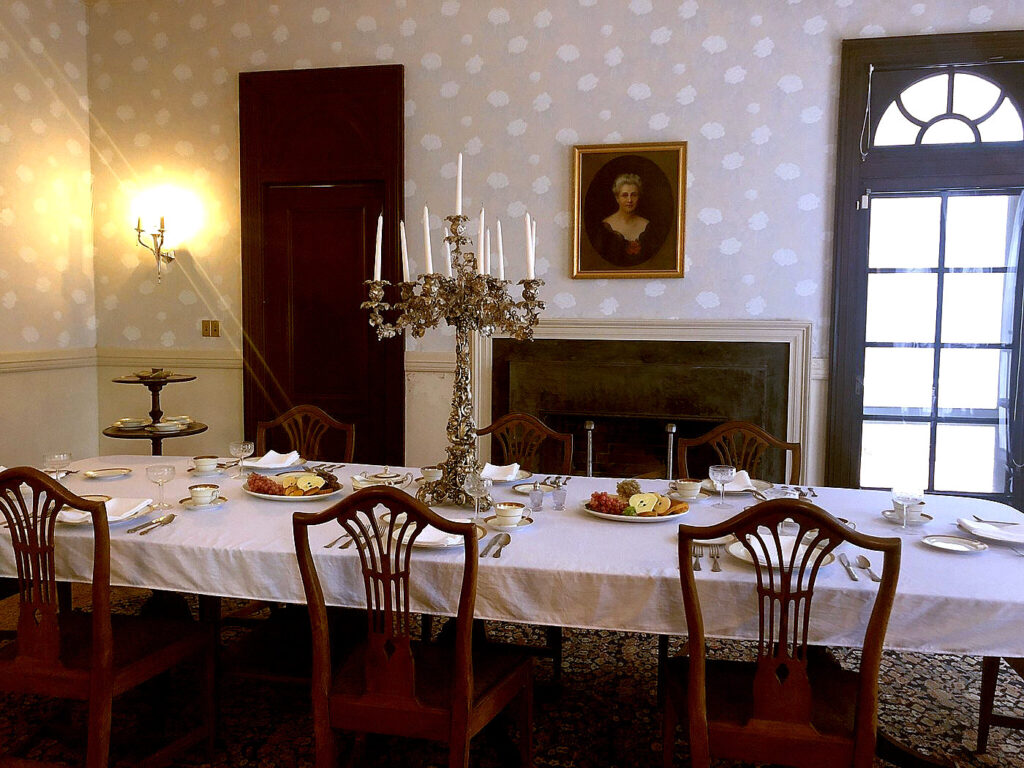
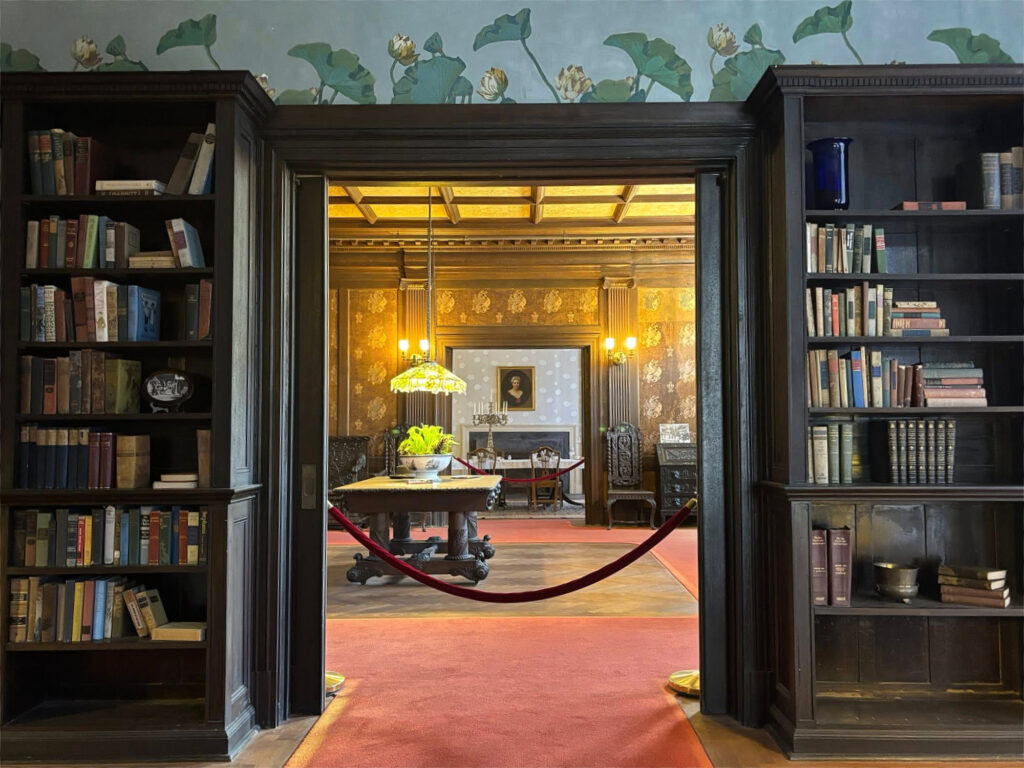
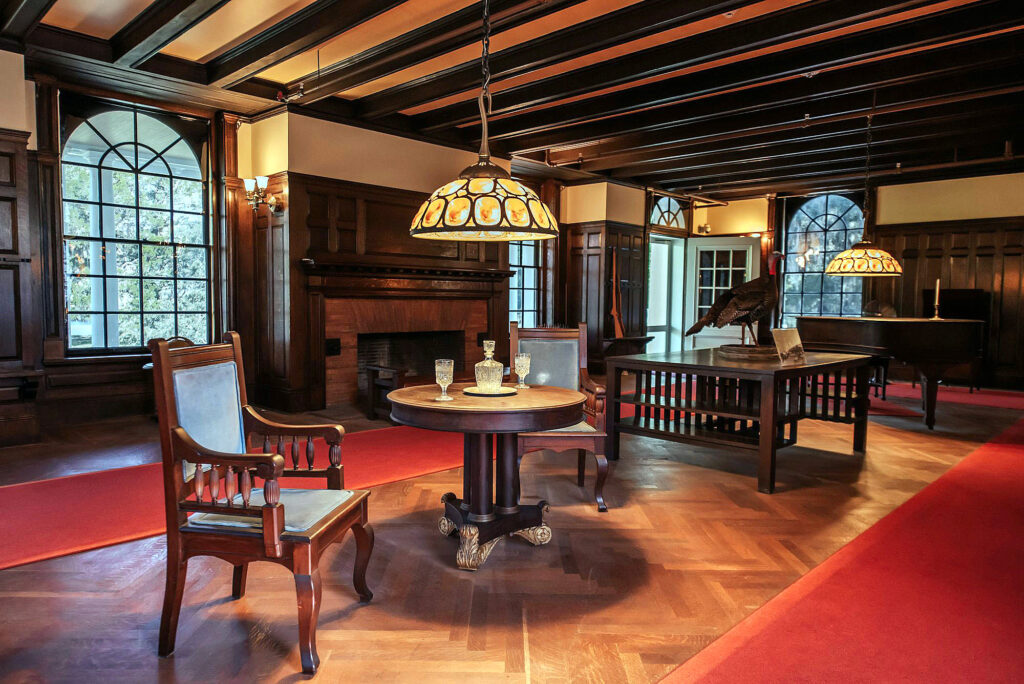
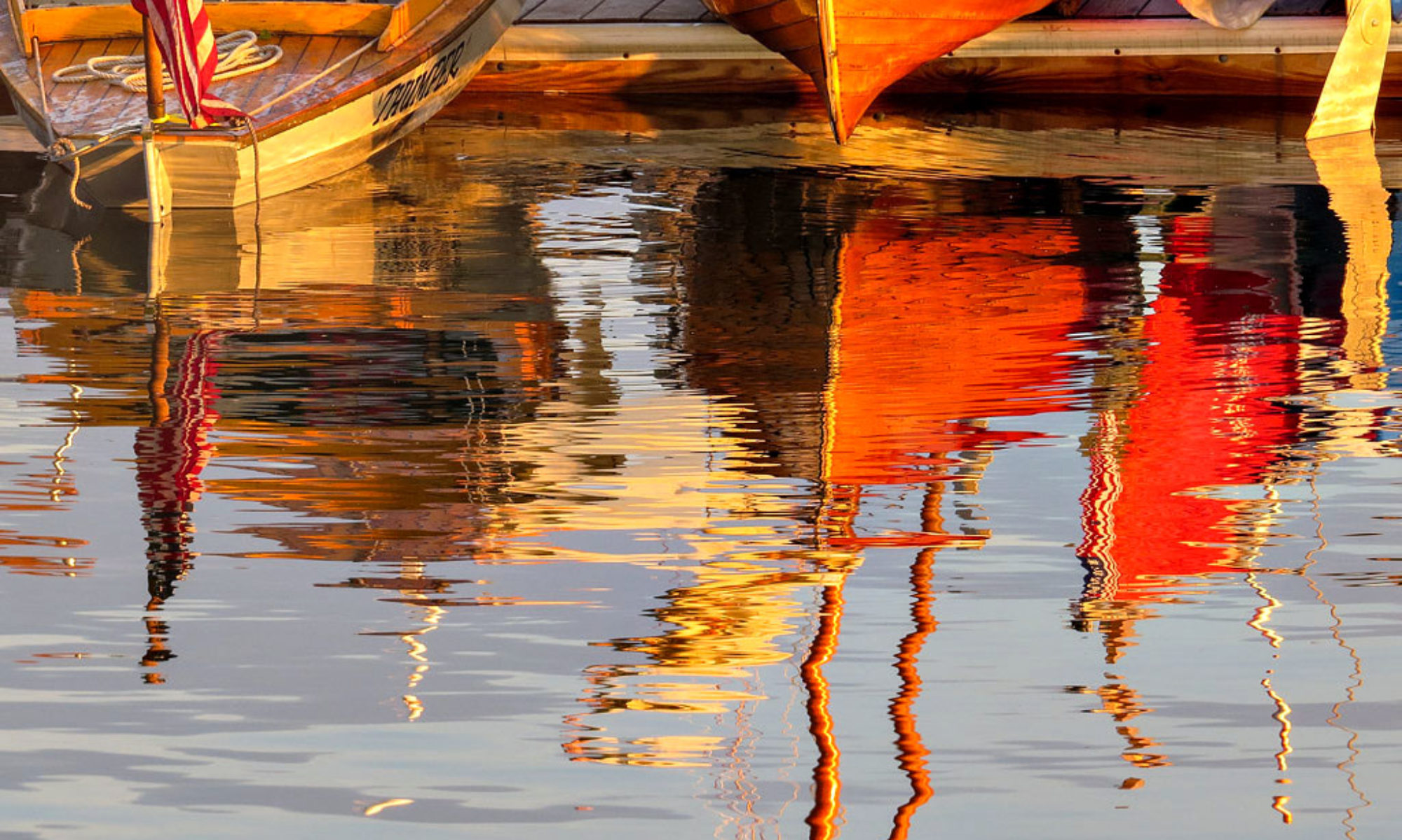

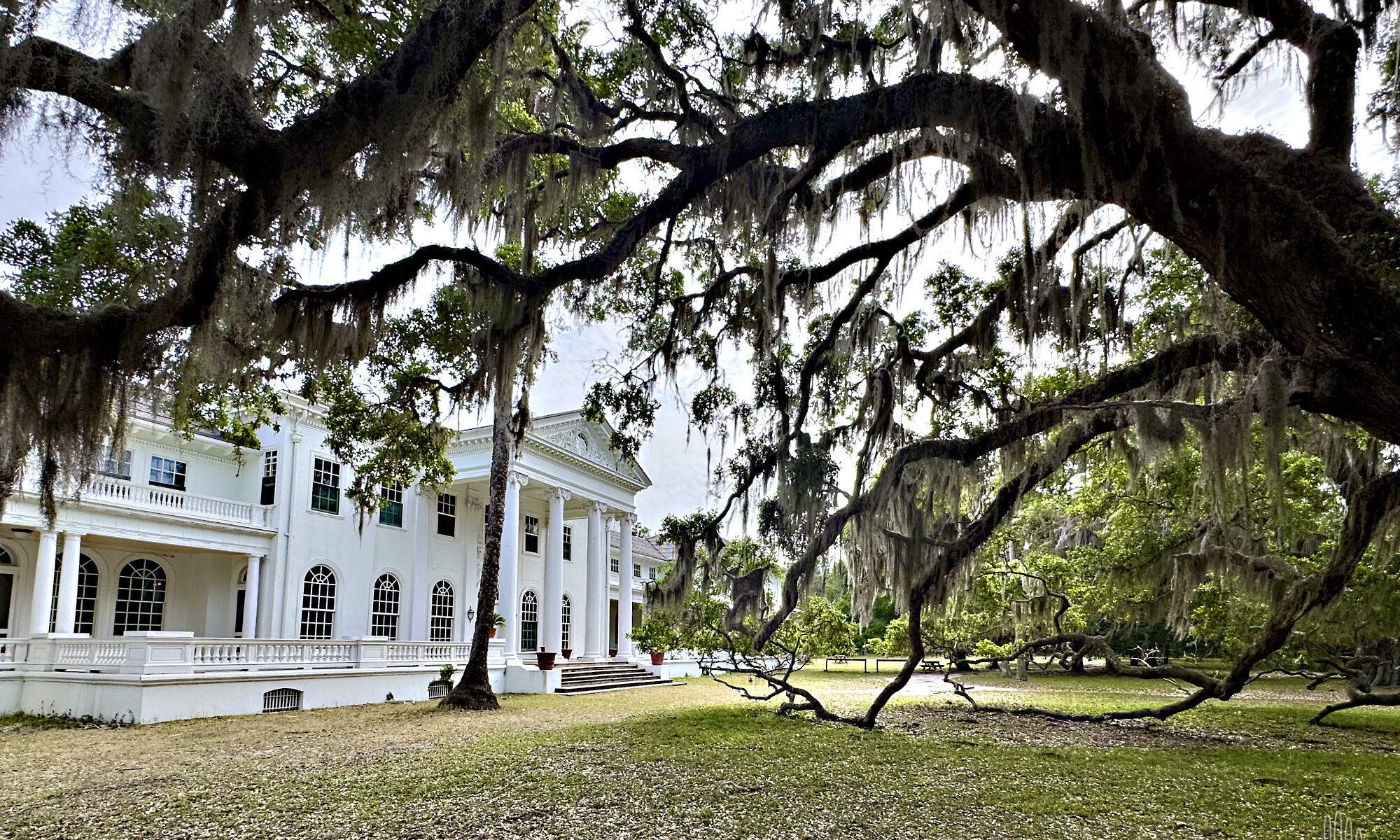
Great report! Thanks.